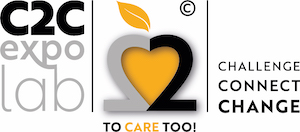Cradle-to-cradle design: creating healthy emissions – a strategy for eco-effective product and system design
Abstract
Eco-effectiveness and cradle-to-cradle design present an alternative design and production concept to the strategies of zero emission and eco-efficiency. Where eco-efficiency and zero emission seek to reduce the unintended negative consequences of processes of production and consumption, eco-effectiveness is a positive agenda for the conception and production of goods and services that incorporate social, economic, and environmental benefit, enabling triple top line growth.
Eco-effectiveness moves beyond zero emission approaches by focusing on the development of products and industrial systems that maintain or enhance the quality and productivity of materials through subsequent life cycles. The concept of eco-effectiveness also addresses the major shortcomings of eco-efficiency approaches: their inability to address the necessity for fundamental redesign of material flows, their inherent antagonism towards long-term economic growth and innovation, and their insufficiency in addressing toxicity issues.
A central component of the eco-effectiveness concept, cradle-to-cradle design provides a practical design framework for creating products and industrial systems in a positive relationship with ecological health and abundance, and long-term economic growth. Against this background, the transition to eco-effective industrial systems is a five-step process beginning with an elimination of undesirable substances and ultimately calling for a reinvention of products by reconsidering how they may optimally fulfill the need or needs for which they are actually intended while simultaneously being supportive of ecological and social systems.
This process necessitates the creation of an eco-effective system of “nutrient” management to coordinate the material flows amongst actors in the product system. The concept of intelligent materials pooling illustrates how such a system might take shape, in reality.
More information about the paper:
Volume 15, Issues 13–14, September 2007, Pages 1337–1348


